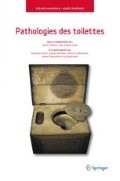Résumé
À l’inverse des troubles vésico-sphinctériens, peu d’études ont été consacrées aux troubles ano-rectaux des pathologies neurologiques centrales, expliquant ainsi une fréquence longtemps sous-estimée. Cependant, depuis quelques années, et en partie grâce à une meilleure connaissance de la physiologie colorectale, la grande prévalence de la constipation de transit et de la dyschésie (mais aussi de l’incontinence fécale parfois secondaire à ces constipations) a pu être démontrée chez les patients atteints de pathologies neurologiques centrales telles que la sclérose en plaques (SEP), la maladie de Parkinson, les accidents vasculaires cérébraux (AVC), les traumatismes crâniens (TC) ou les atteintes médullaires [1]. Toutefois, et à l’inverse ce qui est observé pour les troubles vésico-sphinctériens, la révélation d’une maladie neurologique par des symptômes ano-rectaux reste anecdotique, notamment à cause de l’extrême fréquence de ces troubles dans la population générale (présents chez au moins une personne sur quatre notamment chez la femme [2]), ne suggérant pas ainsi de manière évidente la recherche systématique d’une pathologie neurologique sous-jacente responsable du trouble considéré.
Preview
Unable to display preview. Download preview PDF.
Références
Krogh K (2009) Neurogenic colorectal and pelvic floor dysfunction. Best Pract Res Clin Gastroenterol 23: 531–43
Siproudhis L, Pigot F, Godeberge P et al. (2005) Defecation disorders: a French population survey. Dis Colon Rectum 49: 219–27
Sangwan YP (1998) Internal anal sphincter. Dis Colon Rectum 41: 1297–1311
Shafik A (1993) Ano-rectal tightening reflex: role in fecal incontinence. Eur Surg Res 25: 399–405
American Gastroenterological Association (2000) Guidelines on Constipation. Gastroenterology 119: 1761–78
Hinds JD (1990) Prevalence of bowel dysfunction in Multiple Sclerosis. Gastroenterology 98: 1538–42
Munteis E, Andreu M, Martinez-Rodriguez JE et al. (2008) Manometric correlations of ano-rectal dysfunction and biofeedback outcome in patients with multiple sclerosis. Mult Scler 14: 237–42
Hartkopp A, Brønnum-Hansen H, Seidenschnur AM, Biering-Sørensen F (1997) Survival and cause of death after traumatic spinal cord injury. A long-term epidemiological survey from Denmark. Spinal Cord 35: 76–85
Glickman S (1996) Bowel dysfunction in spinal cord injury patients. Lancet 347: 1651–3
Vallès M, Mearin F (2009) Pathophysiology of bowel dysfunction in patients with motor incomplete spinal cord injury: comparison with patients with motor complete spinal cord injury. Dis Colon Rect 52: 1589–97
Vallès M, Vidal J, Clavé P et al. (2006) Bowel dysfunction in patients with motor complete spinal cord injury: clinical, neurological, and pathophysiological associations. Am J Gastroenterol 101: 2290–9
Soler JM, Denys P (2007) L’incontinence anale et les troubles digestifs et leurs traitements en neuro-urologie. Progr Urol 17: 622–8
Winge K (2003) Constipation in neurological diseases. J Neurol Neurosurg Psychiatry 74: 13–9
Otegbayo JA, Talabi OA, Akere A et al. (2006) Gastrointestinal complications in stroke survivors. Trop Gastroenterol 27: 127–30
Bracci F, Badiali D, Pezzotti P et al. (2007) Chronic constipation in hemiplegic patients. World J Gastroenterol 13: 3967–72
Jost WH (2010) Gastrointestinal dysfunction in Parkinson’s disease. J Neurol Sci 289: 69–73
Ramjit AL, Sedig L, Leibner J et al. (2010) The relationship between anosmia, constipation, and orthostasis and Parkinson’s disease duration: results of a pilot study. Int J Neurosci 120: 67–70
Edwards LL, Quigley EM, Harned RK et al. (1994) Characterization of swallowing and defecation in Parkinson’s disease. Am J Gastroenterol 89: 15–25
Chiu CM, Wang CP, Sung WH et al. (2009) Functionnal magnetic stimulation in constipation associated with Parkinson’s disease. J Rehabil Med 41: 1085–89
Author information
Authors and Affiliations
Corresponding author
Rights and permissions
Copyright information
© 2013 Springer-Verlag Paris
About this chapter
Cite this chapter
Amarenco, G., Guidet, A. (2013). Atteintes neurologiques centrales et poussée défécatoire. In: Pathologies des toilettes. Springer, Paris. https://doi.org/10.1007/978-2-8178-0356-2_8
Download citation
DOI: https://doi.org/10.1007/978-2-8178-0356-2_8
Publisher Name: Springer, Paris
Print ISBN: 978-2-8178-0355-5
Online ISBN: 978-2-8178-0356-2
eBook Packages: MedicineMedicine (R0)

